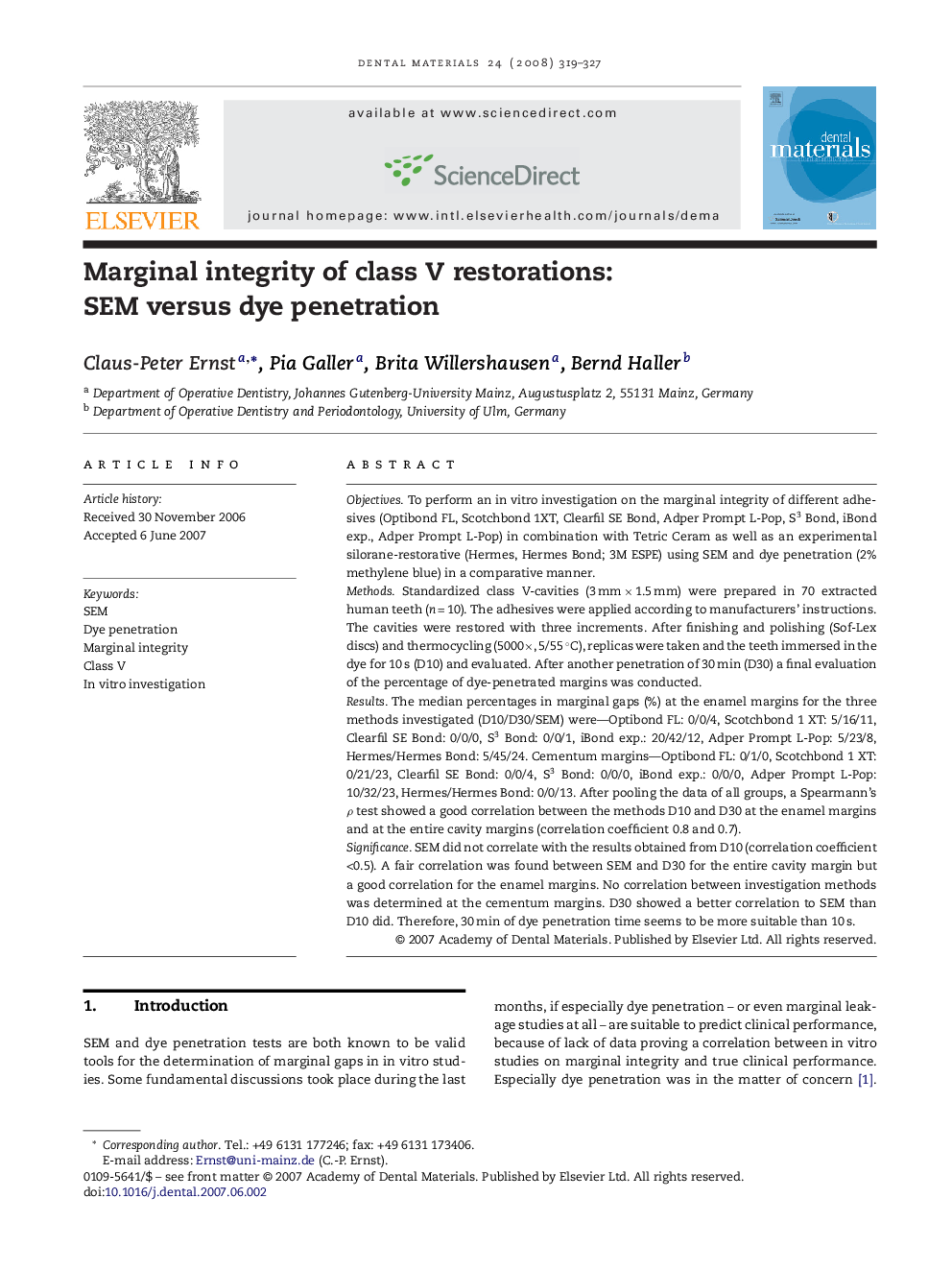| Article ID | Journal | Published Year | Pages | File Type |
|---|---|---|---|---|
| 1422675 | Dental Materials | 2008 | 9 Pages |
ObjectivesTo perform an in vitro investigation on the marginal integrity of different adhesives (Optibond FL, Scotchbond 1XT, Clearfil SE Bond, Adper Prompt L-Pop, S3 Bond, iBond exp., Adper Prompt L-Pop) in combination with Tetric Ceram as well as an experimental silorane-restorative (Hermes, Hermes Bond; 3M ESPE) using SEM and dye penetration (2% methylene blue) in a comparative manner.MethodsStandardized class V-cavities (3 mm × 1.5 mm) were prepared in 70 extracted human teeth (n = 10). The adhesives were applied according to manufacturers’ instructions. The cavities were restored with three increments. After finishing and polishing (Sof-Lex discs) and thermocycling (5000×, 5/55 °C), replicas were taken and the teeth immersed in the dye for 10 s (D10) and evaluated. After another penetration of 30 min (D30) a final evaluation of the percentage of dye-penetrated margins was conducted.ResultsThe median percentages in marginal gaps (%) at the enamel margins for the three methods investigated (D10/D30/SEM) were—Optibond FL: 0/0/4, Scotchbond 1 XT: 5/16/11, Clearfil SE Bond: 0/0/0, S3 Bond: 0/0/1, iBond exp.: 20/42/12, Adper Prompt L-Pop: 5/23/8, Hermes/Hermes Bond: 5/45/24. Cementum margins—Optibond FL: 0/1/0, Scotchbond 1 XT: 0/21/23, Clearfil SE Bond: 0/0/4, S3 Bond: 0/0/0, iBond exp.: 0/0/0, Adper Prompt L-Pop: 10/32/23, Hermes/Hermes Bond: 0/0/13. After pooling the data of all groups, a Spearmann's ρ test showed a good correlation between the methods D10 and D30 at the enamel margins and at the entire cavity margins (correlation coefficient 0.8 and 0.7).SignificanceSEM did not correlate with the results obtained from D10 (correlation coefficient <0.5). A fair correlation was found between SEM and D30 for the entire cavity margin but a good correlation for the enamel margins. No correlation between investigation methods was determined at the cementum margins. D30 showed a better correlation to SEM than D10 did. Therefore, 30 min of dye penetration time seems to be more suitable than 10 s.
